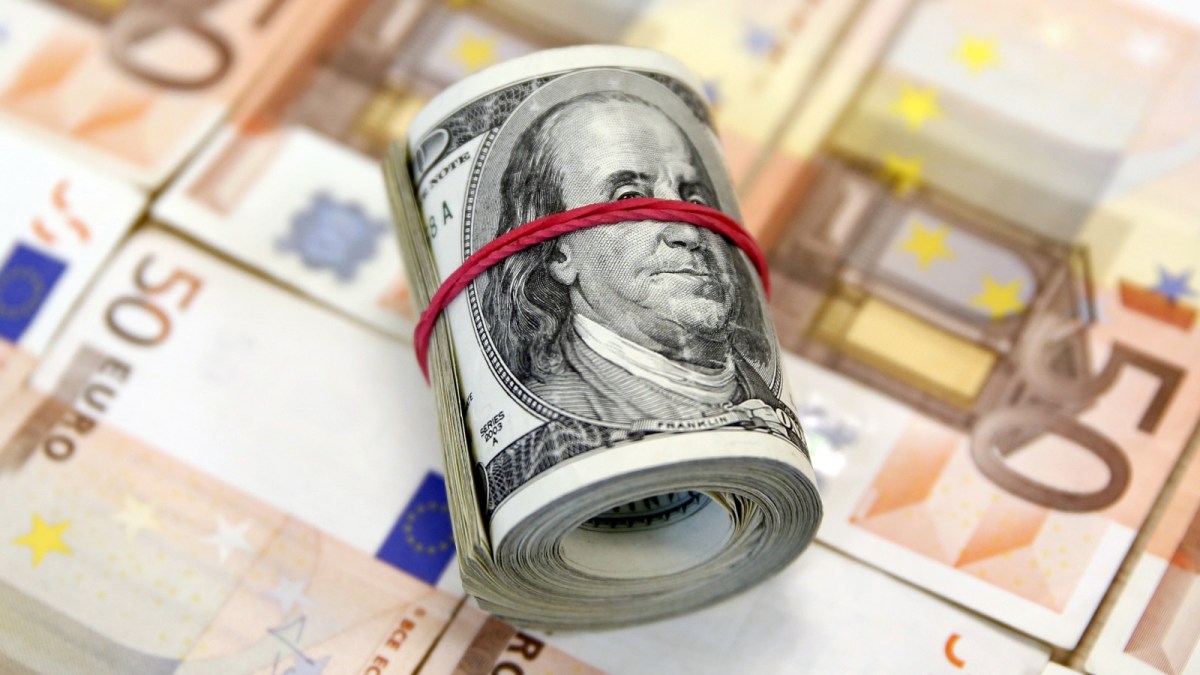The dollar hit a 20-year high on Monday, buoyed by hawkish comments from US Federal Reserve Chairman Jerome Powell, before falling back as the euro was supported by growing expectations of rate hikes from the European Central Bank.
The dollar index - which measures the value of the greenback against a basket of 6 competing currencies - scored 109.48 points, a level not seen since September 2002, before falling slightly at the end of Monday at the end of the trading session.
The euro rose about 0.3%, but remained below the level of parity with the US currency at $0.9993.
A question arises whether the US dollar will continue to rise or is on the verge of peaking, to start another downward journey similar to the one it witnessed 20 years ago.
Turning point for green currency
The writer Rucher Sharma, in a report in the British Financial Times, says, “The US dollar may seem strong, but its weaknesses are constantly escalating. Analysts have turned to an old argument to predict the next status of the green paper.
The writer adds that "what happened two decades ago indicates that what is happening to the dollar is not only an increase, but it is approaching the peak."
Despite the decline in US stocks in light of the collapse of the "dotcom" companies at the time, "the dollar continued to rise before entering a decline that began in 2002, and lasted for 6 full years."
The writer did not rule out that a similar turning point will occur soon, but this time the decline of the US currency may continue for a longer period, according to his expectations.
He points out that the dollar's value against other major currencies is now 20% above its long-term trend, exceeding its 2001 peak, regardless of whether it is adjusted for inflation or not.
The writer says, "Since the seventies, the usual rise in the dollar cycle has continued for about 7 years, and the current rise is entering its 11th year."
Is confidence in the dollar declining?
If the dollar is about to enter a downtrend, the question arises: will this state of affairs persist for a long time, deepening enough to threaten its position as the world's most reliable currency?
Here, the writer emphasizes that besides the four major currencies of the United States, Europe, Japan and the United Kingdom, there is also another denomination of currencies that includes the Canadian dollar, the Australian dollar, the Swiss franc, and the renminbi;
It now accounts for 10% of global reserves, down from just 2% in 2001.
And all of these currencies came and accelerated their gains during the epidemic, mainly at the expense of the US dollar, whose share of foreign exchange reserves fell to 59%, the lowest level since 1995, according to the writer, who saw that digital currencies, despite their damage now, also remain a long-term alternative.
Not only that, but the writer believes that the impact of US sanctions on Russia - which shows the extent of the United States' influence on a world controlled by the dollar - prompts many countries to speed up the search for alternative options, similar to what the largest Southeast Asian economies have done Settlement of payments between themselves in their currencies directly, avoiding the use of the dollar, such as the transactions of Malaysia and Singapore with China.
The writer concludes his report by saying that the dollar today, as in the era of “dotcom”, “appears to benefit from its status as a safe haven, but investors are not rushing to buy American assets to reduce its risks,” and he adds, “Do not be deceived by the strong dollar, the post-dollar world.” coming".
What about the euro?
The single European currency (the euro) is facing difficulties against other major currencies, affected by the repercussions of Russia's war on Ukraine on energy prices, which reached record levels, and fears of a recession due to this crisis.
"Faced with the threat of shortages threatening Europe this winter, we are seeing price sensitivity to any bad news," said Guillaume Duggan, analyst at Western Union.
The questions now revolve around the level to which the euro can fall.
According to a report in the French newspaper “Le Monde”, the weakness of the euro is one of the signs of a slowdown in the economy, and Gilles Moyek, chief economist at the “AXA” insurance group, is quoted as saying, “It seems that a recession has become possible, it may not be in the third quarter of the year, because we are still benefiting.” recovery from the post-Covid-19 pandemic, but perhaps by the end of the year."
As for the analyst and economic expert, Daniel Melhem, he believes - in a previous interview with Al Jazeera Net - that the weakness of the euro price is not primarily a result of the weakness of the eurozone or the war, but rather the strength of the dollar and the increasing demand for it in global markets, and that is what drives it to this great ascent.

